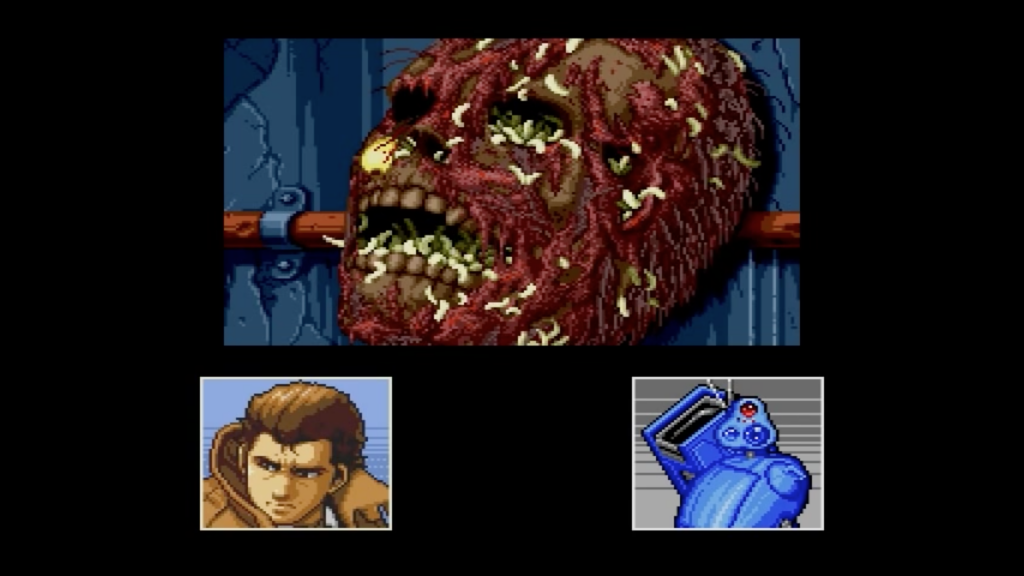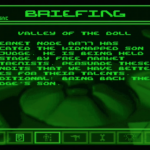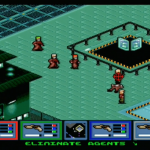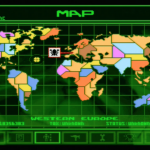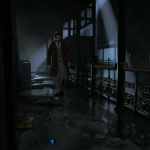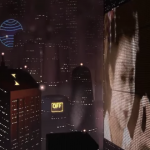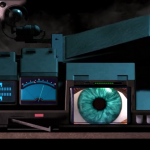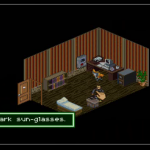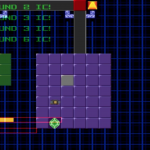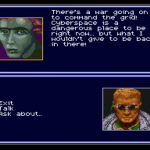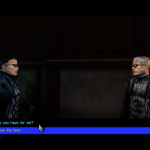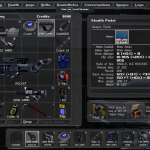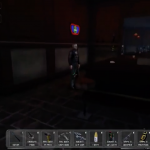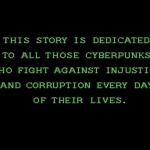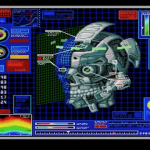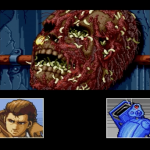Filled with visions of a high-tech low-life future, the cybernetic neon soaked film noir futures envisioned in many Cyberpunk classics were practically destined to find a home on computers and video game consoles. Often reaching past the technologies of the present, but anchored with the all too real potential misery of a dystopian future, the settings often found in the genre have made for some great video games experiences. Here are 5 classic Cyberpunk video games…
5. Syndicate (SNES, 1994 Bullfrog Software)
Syndicate puts you in control of a futuristic Megacorp, a corrupt corporation so powerful you outright own Governments and their countries… A wild concept in 1994 but not exactly too far fetched at this point. Controlling up to 4 cyborg agents, you must carry out industrial espionage, infiltration, kidnapping, brainwashing and other greasy tasks as your corporation slowly takes over the world. As you progress, you can tax the countries you own in order to finance research and development of new weapons for your crew. Tax too much and the people will freak the fuck out, so it’s there is some strategy involved.
The game plays on a isometric perspective with an off-kilter aiming system, similar to Shadowrun in that sense. The SNES version has bloated character sprites compared to the PC-Dos version; your cyborgs look about as threatening as a Lego man.
If there is one thing that stands out for the SNES release, it’s the insanely satisfying sound effect that plays when you shoot someone, perhaps rivaled only by the death screams in Final Fantasy Tactics. Music to my ears. It’s astonishing to me that this made it on the family friendly SNES; some missions have you tasked with outright assassinations of rival company personnel.
4. Blade Runner (PC, 1997 Westworld Studios)
It should come as no surprise that this juggernaut franchise of Cyberpunk makes an appearance on this list: Blade Runner is no stranger to anyone interested in the Cyberpunk subgenre and as it’s cult popularity continued to rise in the 90’s it was really only a matter of time before someone scarfed up the rights to it and released a video game. Appropriately, rather than an action oriented “run and gun” this game is a point and click adventure using some a system not unlike the SCUMM-engine popularized by Lucas Arts. This is a choice that echos the slow pace of the film and suits it wonderfully, allowing the player to really take in the stunningly detailed visuals on-screen and encouraging a deductive thought process when exploring it’s world.
This game follows Ray McCoy, a new lead character created for the game presumably because Harrison Ford didn’t bother returning Westworld Studio’s calls. However, a select few of the film’s supporting cast reprise their roles including William Sanderson as JF Sebastian and, fresh from her early 90’s career meltdown and a role in the critically acclaimed period drama “Ace Ventura: Pet Detective”, Sean Young. She returns here as Rachel a full 2 decades prior to her garish CGI re-imagining in Blade Runner 2049.
Strangely, there is a ton of voice-over narration; an odd choice considering the voice-overs Harrison Ford attempted to sabotage in the theatrical cut of the original film. Though I suppose it’s somewhat necessary to keep the information flowing in the game. Despite some detached voice acting of the lead, the lack of Harrison Ford, lack of input from Ridley Scott and lack of Vangelis’ original score, “Blade Runner” manages to do justice to the film universe on which it is based, a triumph considering those glaring absences. Consumers seem to have agreed; the game shifted over a million units, which presumably makes it a bigger financial success than the original film upon which it is based.
3. Shadowrun (SNES, 1994 Beam Software)
I’ll be writing this mostly based of my experience with the SNES console release of this game rather than the subpar Genesis / MegaDrive version. Shadowrun is adapted from the Tabletop roll playing game released in the late 1980s.
The game is set in 2050 and starts with your character waking in a morgue with amnesia. Presumably, someone in the morgue is getting fired for putting this dude on ice while he is still breathing. The game is played on an isometric plane, which as history shows, instantly makes games feel totally fucking strange. It’s somewhere between an action RPG and a point and click adventure in how it controls, which was certainly a unique feel for the SNES days. It feels about as close to an early 90’s PC game as you can get for a console game.
Certain sections of the game shift gears where you use a “cyberdeck” and “hack into cyberspace”. On the SNES this is in the form of a top down section where as a child I had absolutely no idea what was going on, and in the Genesis version a weird looking Silver Surfer look alike crawls around shooting electricity and cubes, and as you can imagine it is extremely Nu Metal in design. Basically like playing a Fear Factory album cover as a video game. Should you die in Cyberspace, your character dies in the real world, which is about the most Cyberpunk thing I could possibly think of. I love it. Spend half an hour on social media and you will often wish this feature was implemented in real life.
2: Deus Ex (PC, 2000 Ion Storm)
The only game to come out of John Romero’s Ion Storm studio that wasn’t a critical or commercial dog’s knob, in fact, this game was such a critical wet dream hit that it is still a series today. Ostensibly a shooter with the soul of an action-RPG, game play wise, it plays close to the first Half-Life but clothed in Cyber fetish looking leather jackets for people who like wearing sunglasses at night.
The main character, JC Denton, looks like a guy who would sell ecstasy to high school students and listen to Skinny Puppy. He works for the United Nations Anti-Terrorist Coalition and is augmented by nano-machines. A virus called “Gray Death” is released in the United States, to which there is no cure. However, a vaccine exists but is in small numbers, only made available to the affluent and the elite of society; this is in essence a “Floorpunch on Gold” level of scarcity and demand. A complex web unveils itself depending entirely on player actions.
Back to the Nano-Machines. This is a big part of the game because you’re able to earn skill points with which to enhance your character as you seem fit. Nano-Machines: The GOOD kind of bugs under your skin. Want a stealthy, terminal hacking ghost? Go for it. Want to go in all guns blazing? That’s cool too. The designers let you choose.
This was released around 1999, but was an excruciating development before then for a few years, so even though some of the character design seems culled from the Matrix I’d probably call it a coincidence.
1. Snatcher (SEGA CD, 1994 Konami)
From the mind of Hideo Kojima, before his head went up his own ass, comes Snatcher. Released and re-released over numerous platforms between 1988 and 1996, from the MSX all the way up to the Sega Saturn, though the Sega CD release is considered the definitive version. Heavily indebted to Blade Runner, it’s a text heavy menu based adventure where one can “look”, “investigate”, “ask” to find new information to progress the story, with a few clumsy grid-based shooting sections to break up the monotony.
In 1996, a Russian developed weaponized bio-chemical agent “Lucifer Alpha” is released into the atmosphere and kills half the world’s population. 50 years later, mechanical copies of humans, Snatchers, begin killing and taking the place of those they snatched. The player assumes control of Gillian Seed (a sugar free, diet Coke to Rick Deckard’s Coca Cola Classic) who works for JUNKER, the anti-Snatcher task force. Together with his tiny robot assistant Metal Gear, he tries to figure out what in flying fuck is going on. Essentially, it’s Blade Runner and Invasion of the Body Snatchers thrown in a blender.
One particularly memorable scene features a strip club populated by numerous Konami characters. Simon Belmont? Rocket Knight? Both presumably enjoying a couple of brewskies at the ol’ ballet after a long day at work. Hell, the Contra guys are full on sitting in “sniffer’s row”.
This is all propelled forward with an amazing, pumping soundtrack by Masahiro Ikariko of the Konami Kukeiha Club. It drives and thumps and really establishes the heartbeat of Neo-Kobe City. Furthermore, it was recently given a top quality release on gatefold LP by Ship To Shore PhonoCo.The same praise cannot be said for the voice acting, which is not quite as bad as Konami’s other classic Castlevania: Symphony of the Night but still can make you cringe. This is a disservice to an otherwise mature and at times graphic game; I just really wish the same care had gone into the voice acting as the rest of it.
Despite some flaws, this game has achieved a cult-following and is an important step in Hideo Kojima’s ability to weave together a mature narrative game, ultimately paving the way for the expansive dialogue scenes that came to define the Metal Gear series going forward. In that regard, I consider it to be a more important game than even the mighty Deus Ex. It oozes with noir, violence and futuristic trash… Dedicated to all those cyberpunks.

